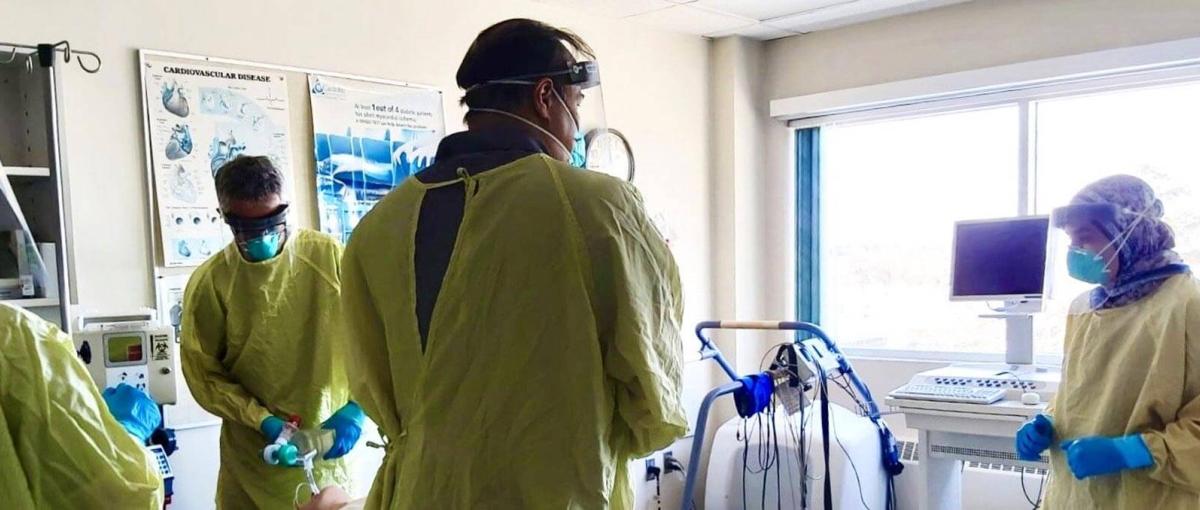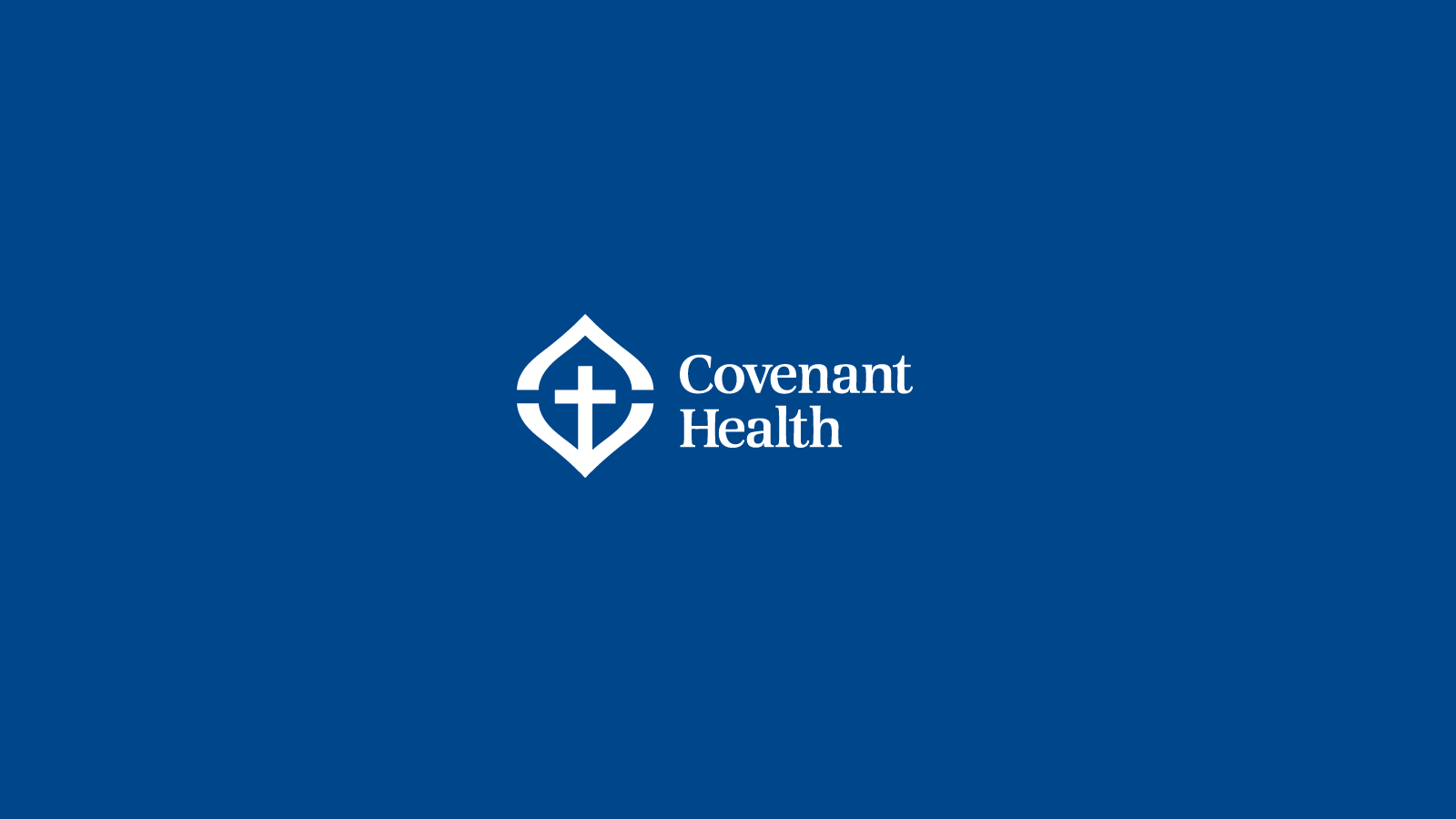Simulation training helps teams with COVID-19 patient care
Teams at the Misericordia and Grey Nuns hospitals practice new processes and procedures

June 11, 2020
By Marguerite Watson, Senior Communications Advisor, Covenant Health
Simulations have long been used in medical training, and teams across Covenant Health are now using them to ensure they’re able to treat patients with COVID-19 in a range of situations.
“With COVID-19, it’s a brand new learning curve. Every step of the patient’s pathway is a complex, different process,” says Dr. Bob Black, associate chief medical officer and medical director, Misericordia Community Hospital.
Simulation training in health care involves practicing a process or procedure in a safe, controlled environment before applying it to actual patient care. Simulations follow different scenarios with different levels of complexity and can include live volunteers or mannequins.
Code Blue cardiac arrest simulations
The cardiology department at the Misericordia has been using simulations to practice Code Blue, or cardiac arrest, scenarios involving COVID-positive patients with different hospital units. The scenarios cover a full range of processes and procedures, including donning and doffing appropriate personal protective equipment (PPE), performing cardiopulmonary resuscitation (CPR), monitoring heart rhythms and using ventilation tubes to aid breathing.
“We’ve had to come up with a totally new way of running a Code Blue, keeping in mind staff safety, infection concerns and good patient outcomes,” says Dr. Sayra Khandekar, facility chief of cardiology for the Misericordia hospital, who has helped run simulations with nurse practitioner Sarah Kosowan.
The scenarios include full multidisciplinary participation — everyone from switchboard staff to porters, nurses, physicians, respiratory therapists and infection control representatives has been involved. Staff from various departments who are not able to participate are also welcome to observe the simulations. And there’s an unofficial waiting list of volunteers for future training.
“We’ve had very enthusiastic volunteers from the different units, particularly because everyone was feeling anxious about dealing with COVID-positive patients and the risks to themselves, their families and other patients,” Sayra says.
The learnings gained from the simulations have helped team members refine their processes and draft new policies and procedures for each situation. For example, they discovered they would need a better means of communicating inside and outside a COVID-positive patient’s room in a cardiac emergency, so they came up with the idea of using a walkie-talkie stored in a plastic bag. They also learned that, to minimize potential exposure to the virus, they would need to limit the number of people going into the room to six, with a spotter stationed outside to ensure everyone vacates the room and removes their PPE in the right order.
“The whole process has been beneficial from the beginning to the end,” says Sarah. “The feedback that we’ve gotten is positive, that it’s a positive learning experience in a friendly environment.” Getting immediate input from different disciplines about what does and doesn’t work has also been valuable, allowing teams to make changes instantly, she says.
Women’s health simulations
Similarly, the women’s health teams — labour and delivery, postpartum and neonatal intensive care — at the Misericordia and Grey Nuns Community Hospital have adapted their regular simulation training to prepare for situations involving COVID-suspected or positive patients.
The pandemic has changed how the hospitals handle everything, which has meant rethinking and reworking routine processes, says Sheri McKenzie, program manager for women’s health at the Grey Nuns.
The idea to use simulations in COVID-19 planning came from hearing about the experience of medical teams in Italy that had issues with donning and doffing PPE. Emily Chute and Michelle Cyca, clinical nurse educators, labour and delivery, who run women’s health simulations at the Grey Nuns, say they first tailored their practice to learn from that experience but soon began to apply COVID-19 to other scenarios.
“It has been a huge learning because there are things that look good on paper but don’t work out when you do them. Being part of the tweaking process to make them actually functional has been quite enjoyable,” says Emily.
While donning and doffing has been a major focus of the women’s health simulations, teams have also practiced new processes and procedures for transferring mothers and babies, performing caesarean sections and vaginal deliveries and every other aspect of caring for a COVID-suspected or positive patient. And like the cardiology simulations at the Misericordia, these practice sessions include a full range of participants — nursing staff, physicians, residents, unit clerks and unit attendants — as well as observers.
As often as possible, the simulations also involve healthy patient volunteers. “Patients have been quite open to helping nursing staff and physicians learn and to support that training,” says Vanessa Elliott, clinical nurse specialist, women’s health, who has worked with the clinical nurse educators to facilitate some of the COVID-19 simulations at the Grey Nuns and Misericordia.
One benefit of doing simulations with a live person rather than a mannequin is the opportunity provided to practice the communication that will need to take place with a COVID-suspected or positive patient, Vanessa says. “We try to have clear, open communication with all our patients, but in a situation that is a little more unique, like COVID-19, we really want nursing staff and physicians to have the opportunity to answer questions patients may have about the labour and birth experience during a pandemic.”
Practicing the new processes and procedures in a safe environment has helped staff build confidence. “Everyone has been so anxious and nervous about COVID, and the simulations have been key in getting them comfortable and feeling like we can get through this,” says Michelle.
